

Temporary Admission for Yachts in EU Countries – A Guide

Italian IMU tax 2021

Costs of Buying a House in Italy
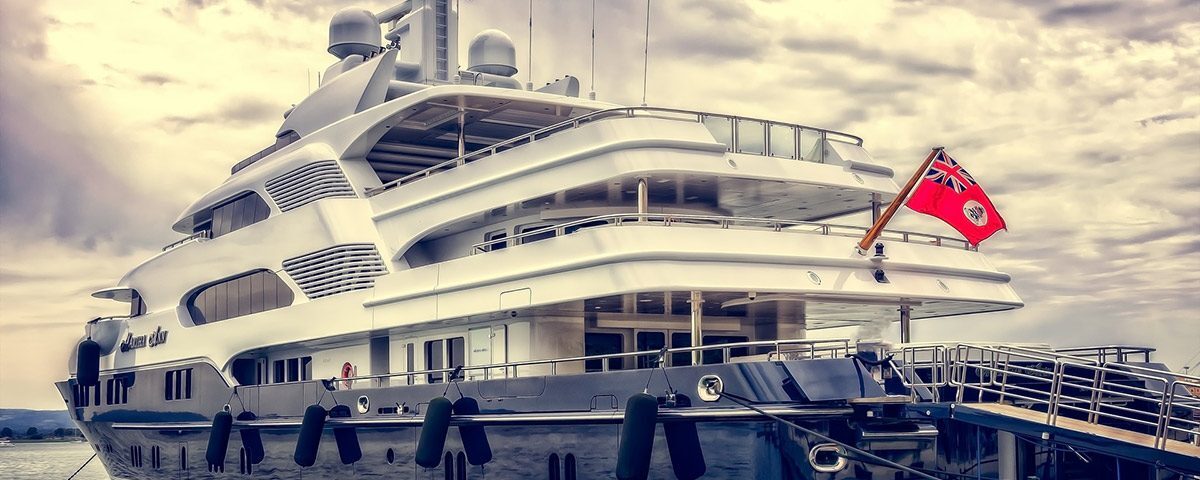
Yachts flagged in a country that is not part of the European Union can sail in the territorial waters of the Union in a special regime called “ temporary admission ”.
This concession is granted under these conditions:
- – The yacht must have flag registration in the name of a company established outside of the EU
- – The flag must be registered in the name of a private individual residing in a non European Union country.
- – The person who uses the yacht must reside outside the EU.
In few words, all yachts that are not EU flagged, or whose owner is a non-EU resident, have limited time to sail in EU territory waters.
How long can the yacht stay in the EU?
The time limit for temporary admission for yachts expires in 18 months. This is the maximum time allowed for the yacht to sail in Italy or, more generally, in European waters.
Regulation EC n. 2454/1993 (clause 558) * allows boats registered outside of EU territory to sail in European waters without having to pay any VAT or duties.
According to this Regulation, the access in EU territory does not require authorization nor a particular guarantee.
During the temporary admission, all means of transport are qualified as “foreign goods”, which are temporarily admitted within EU territory.
In case of failure to comply with EU regulation, both the yacht and its owner can face serious consequences, which may involve seizure of the yacht and/or severe financial penalties.
When does the 18 months-period for temporary admission for yachts start?
This period for discharge – and, therefore, the temporary admission for yachts – start from the moment the yacht enters EU territorial waters.
How does the ship owner certify the starting date of the period for discharge?
Entering EU territorial waters is enough to prove that the yacht is in temporary admission.
However, a yacht owner can provide an oral or written declaration to the competent authorities, particularly to the Custom office of the first port of entry within the EU.
The Italian Customs Agency’s legislative office has also confirmed that a verbal or written declaration of a “pleasure yacht” is not mandatory.
For pleasure boats which enter EU waters and are registered in a non-EU country this declaration is a discretionary choice of the declarant.
Therefore, a vessel is under a temporary admission regime just by crossing the EU border.
Yet, the ship owner can certify the date of entry of the vessel in EU waters by orally declaring the goods according to the 71-01 RD annexe . This is a supporting document where goods are declared for temporary admission.
This form is made of two parts, one to be filled by the shipowner, one by the Custom Office.
When arriving at a Port – additional information
Moreover, it should be noted that pleasure yachts with foreign flag must have the so called “ Costituto d’Arrivo ” when entering Italian territorial waters.
This document is issued by the maritime authority of the first national mooring port. It is valid for 12 months and it must be returned to the maritime authority upon departure to a foreign port.
Since this document has a shorter duration than the maximum term of temporary admission, it is implied that the declarant is bound to apply for a new “ Costituto d’Arrivo” after 12 months.
How to extend the 18 months period for discharge?
If the yacht leaves EU waters, it is still allowed a temporary admission in the case of reentry in EU territory.
It is important to note that the admission is interrupted when the boat leaves EU waters, unless it starts running from the beginning in the event of a subsequent reentry.
Aggiungre u titolo con riferimento alla frase subito sotto
Temporary importation to EU: Custom Smuggling
In case of a non-fulfillment of the conditions determined by said regime – such as exceeding the period for discharge – the ship owner may face customs debt together with “fines established in the case of a contraband violation”. This is stated by clause 216 of the Italian Presidential Decree 43/1973 (clause 295 of the Decree of the President of the Republic of Italy 43/1973).
In other words, if the yacht does not leave EU waters, its owner will be criminally liable for contraband. This will not happen if a different regime has been applied, or the yacht has been imported and VAT , as well as import duties , have been successfully paid.
Can the period of temporary importation be suspended?
We can therefore establish that each boat under the temporary admission regime must be authorised for free circulation. If she does not, she must leave EU waters within the above-mentioned limited time allowed.
Upon certain conditions, the period for discharge can be suspended for then starting again once the circumstances that caused its temporary termination are resolved. This happens, for instance, in case of boat storage in EU territory.
Are Goods Under Temporary Admission Able to Undergo Processing?
Yachts are cleared from paying importation duties when they are temporarily imported into Italian waters, for example, for
- maintenance purposes
- assembling in the shipyard or
- construction reasons.
This is allowed by clause 9.1, no. 2 of the Italian Presidencial Decree 633/1972.
According to the above clause, the transit of temporary importation or export goods are not subject to taxation.
This means that, in the above-mentioned circumstances, there are other arrangements in place allowing yachts to enter Italian waters again under a VAT exception regime, without being subject to temporary importation laws.
Please note that it is mandatory to submit a request to the relevant custom authority of the place where the yacht is laid up, otherwise the risk is the seizure of the boat. Only thanks to the above request the yacht can obtain an interruption of the period for discharge.
How can you get help from Attorneys at Luxury Law in case of Yacht Seizure?
Luxury Law is specialised in maritime and shipping law.
We have assisted several companies and private individuals in the complex procedure of their luxury yacht purchase.
Our maritime lawyers have expertise in helping boat owners in case of seizures, issues related to yacht accidents, and so on.
You can reach out to us in case of yacht seizure or infringement proceedings against your vessel.
We will be able to provide you with immediate assistance and experienced support.
You can contact us here .
If your query is urgent, please contact us via WhatsApp at +39 327 12 60 285.
For further information or clarification: [email protected]
Related posts

Master Italian Real Estate Law: Your Ultimate Guide
We provide forward thinking solutions for high and ultra-high net worth individuals and families, as well as multi and single family office arrangements.
Forward looking and focused on strategic efficiency, we have the expertise and multi-jurisdictional capabilities to establish and administer thought-through, beneficial and compliant structures, providing the required level of substance for international corporate clients.
With over 50 years’ experience in yacht ownership and operational services, Praxis Yacht Services (formerly Sarnia Yachts) is one of the longest standing businesses in the yacht sector.
Private Wealth
Corporate Services
Yacht Services
Our Community
Profile for Ava Fairclough, Managing Director in the London office of trust and corporate services provider Praxis
Profile for Anna Falzon, Human Resources Manager in the Malta office of trust and corporate services provider Praxis
Profile for Virginia Lee, Trust Manager in the London and Hong Kong office of trust and corporate services provider Praxis
News & Insights
We are a forward-thinking provider of tailored private wealth, corporate administration and yacht services, catering to the distinct needs of companies, individuals and families globally., we are an independent, leading provider of bespoke private wealth, corporate administration and yacht services to companies, individuals and families across the world..
Our Memberships
We inspire our people to be their best, developing an environment that nurtures personal growth and empowers them to deliver market-leading client services.
Why Choose Us
Diversity and Inclusion
Grow With Us
The Wider Community
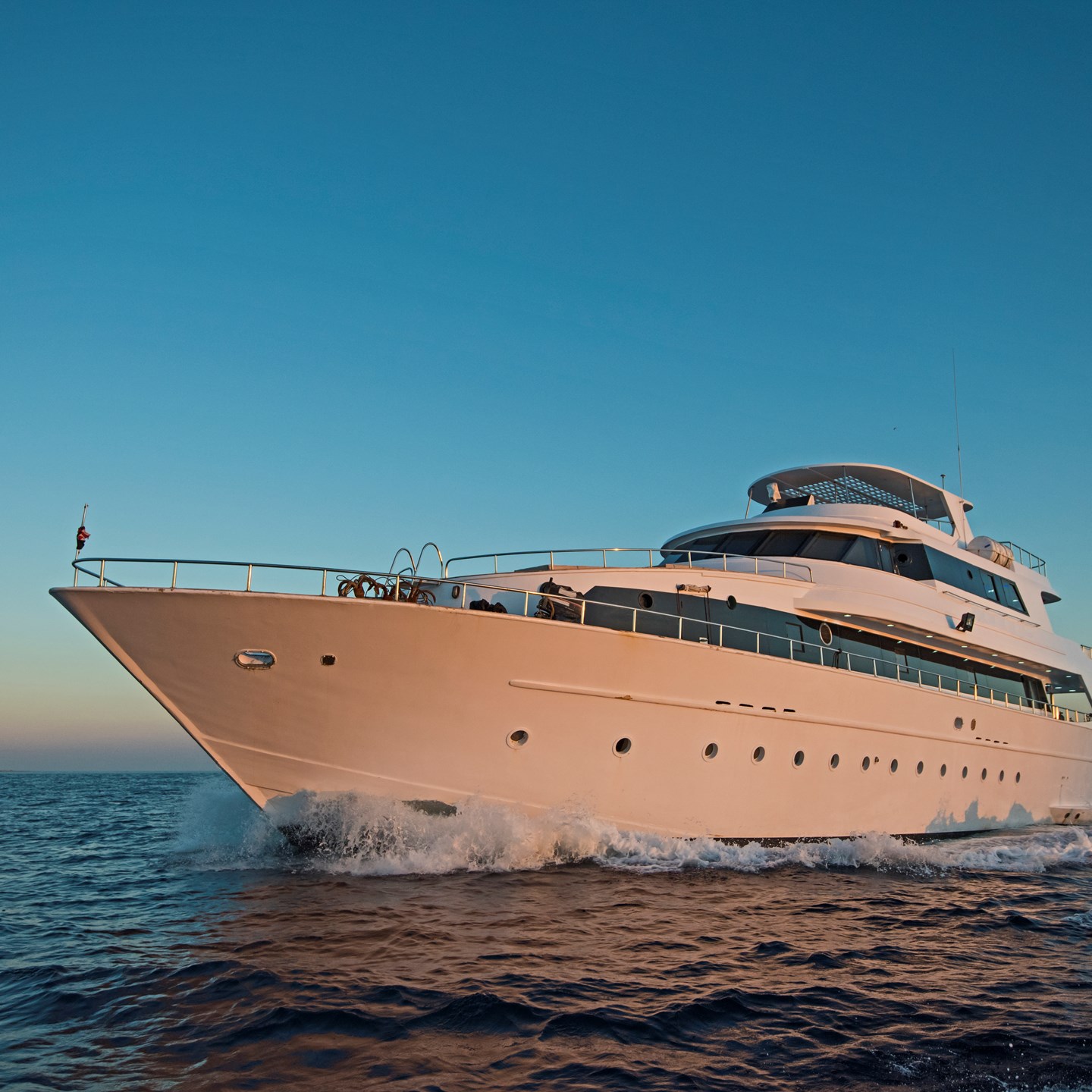
Temporary Admission & Temporary Importation Overview
Temporary admission & importation overview, 30 august 2021.
Brexit has now opened up Temporary Admission opportunities for UK residents.
Even though the current regulations surrounding Temporary Admission (often referred to as Temporary Importation or ‘TI’) have been in place since 2001, we still receive calls on a regular basis asking how long a yacht can remain in the European Union while operating under Temporary Admission along with the specific requirements to comply. Brexit has now opened up Temporary Admission opportunities for UK residents.
Any non-EU privately registered/owned yacht (now including UK from 1 January 2021) can operate in the EU for a period not exceeding 18 months at which point the yacht reaches the period of discharge and must be removed from the EU. Any user of the yacht must be a non-EU resident although EU resident guests can accompany the non-EU user who must also be on board. We often come across clients who believe that a non-EU owning company solves the problem and enables EU residents to use the yacht, but this is not the case.
The previous title Temporary Importation was a bit misleading as the yacht is never actually imported into the EU but is simply given a rite of passage throughout the EU whilst complying to the relatively simple rules. The title Admission has now been adopted which gives a clearer indication of how the yacht is really operating and differentiates it from yachts that have been imported under an EU importation declaration.
There is an official Temporary Admission inventory/document to be completed when the yacht first enters the EU at the start of the 18-month period although we do not see many cases where customs have asked for the form to actually be completed. If the yacht is laid up, it is possible to extend this for a further period of six months up to a total period of 24 months although we do recommend that acceptance is sought from local customs authorities before going over the 18-month period.
We have seen instances where local customs have challenged yachts being marketed for sale whilst in the EU under Temporary Admission and note that the legislation does enable customs to apply a security deposit or guarantee to cover the customs duties and VAT that would become due if the yacht was sold or not removed within the required time frame.
Boat shows are a prime situation when a different regime titled ‘Temporary Admission for exhibition’ is required to be filed before the show commences. A guarantee is sometimes required although in our experience the level of guarantee is a token amount rather than the full amount that would fall due for duties and VAT.
Temporary Admission should not be confused with Inwards Processing Relief (often referred to as TPA) for yachts wishing to enter the EU to undertake VAT free yard works. There are different requirements for TPA and prior advice should be sought before engagement with yards for works to be undertaken on this basis.
Please note that this content is intended to provide a general overview of the matters to which it relates. © Praxis Group 2023
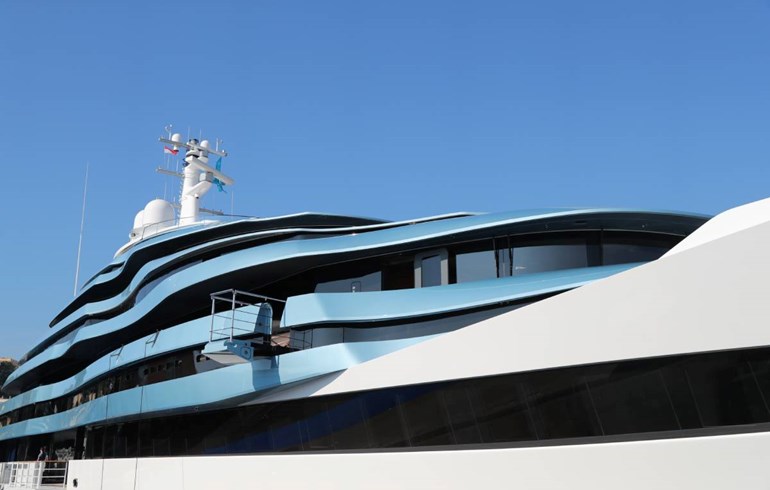
Yacht VAT Management Solutions
In collaboration with legal and tax specialists, Praxis Yacht Services can provide the necessary arrangements to help you navigate your European VAT obligations.

Bruce Maltwood
Director, Yacht Services
T +44 238 212 6414
Yacht Ownership Services
Praxis Yacht Services provides bespoke yacht ownership structures to owners of vessels of all sizes, providing considerable advantages and peace of mind.
Yacht Crew Management
We provide a full suite of crew management services to complement our MLC-compliant employment and payroll services.
Yacht Management Services
We support private and corporate owners, trustees, family offices and captains with a range of yacht management services to support their operational requirements.
Sign up to our updates
Hercberg SuperYacht Law
“money can't buy you happiness, but it can buy you a yacht big enough to pull up right alongside it.” ― david lee roth.
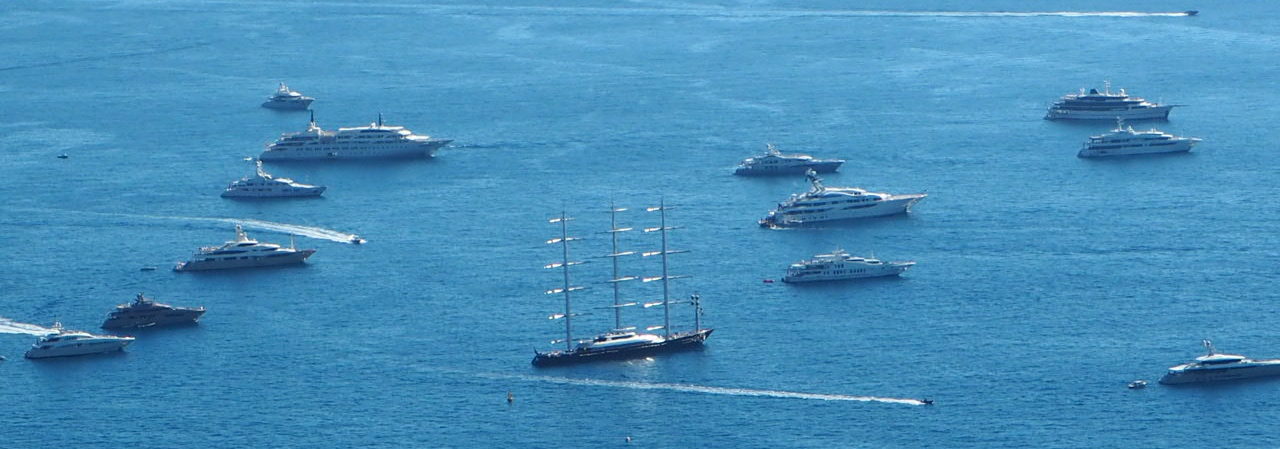
Yacht temporary admission procedure in the European Union
Yacht temporary clearance procedure, how can a yacht be placed under the temporary admission procedure, how long can a yacht placed under the temporary admission procedure stay in the eu, can 18 months be extended if the yacht is not used, can you benefit from another period of temporary admission how long you have to wait.
and when you return you can start a new temporary admission period. There is no „minimum period” in the Customs Regulations during which the yacht must remain outside of Customs
Temporary admission procedure – regulations
- article 250-253 of the Union Customs Code (Regulation (EU) No 952/2013 of the European Parliament and of the Council of 9 October 2013 laying down the Union Customs Code);
- article 207 – 217 of Commission Delegated Regulation (EU) 2015/2446 of July 28, 2015.
Important – temporary admission procedure

Podziel się:
Leave a reply cancel reply.
European Union: Luxury Yacht Outside The EU: Rules And Procedure For The Temporary Admission To EU
What is temporary admission for luxury yacht outside the eu .
The concept of "temporary admission to the EU", the one related to permanence in territorial waters, may be different depending on whether recreational crafts belong to a Member State of the EU or to a third country.
For recreational crafts belonging to a Member State there are no constraints with regard to sailing in territorial waters of the EU.
Conversely, recreational crafts flying the flag of a non-EU State, while being free to navigate in the territorial waters of the Union, they are required to comply with specific rules established on the basis of a single regulation for all Member States . This is in order to benefit from entry without the payment of duties and without authorizations (the so-called "temporary admission").
The temporary admission regime differs according to whether it is a "commercial use" or a "private use" of a means of transport.
Private means of transport, including recreational crafts, may benefit from temporary admission, provided that:
● they are registered outside the customs territory of the EU;
● registration is in the name of a person established or resident outside the customs territory of the EU. Or, if they are not registered, they are owned by a person established outside the customs territory of the Union;
● they are imported and used by persons residing in that territory.
Customs declarations of luxury yacht outside the EU
Art. 212 of EU Regulation no. 2446/2015, dictates the procedure and conditions for granting total exemption from import duties for means of transport.
With reference to the aforementioned article, the Central Legislative Directorate of the Italian Customs Agency confirmed that for a "Pleasure Yacht" registered in a third country, the request for customs declarations certifying the time of entry into the customs territory of the Union is not to be considered as mandatory, but optional. This, by virtue of the fact that the simple crossing of the Union border entails the constraint of the "temporary admission" regime.
However, in the event that the owner of the vessel still decides to submit the aforementioned verbal declaration, in order to have the time of entry into the territory of the Union and the consequent beginning of the period in which he could remain in the territory ( deadline for discharge ) certified by the Customs Office, the owner himself will be considered burdened to prove the existence of the conditions provided for by the legislation and to prove the origin from a non-EU country.
Luxury yacht outside the EU: VAT exemption, when may it occur?
Before we start discussing the regulations related to VAT exemption, it is necessary to define the so-called "commercial yachts".
Commercial yachts have the following characteristics: ● hull length greater than 24 meters; ● gross tonnage not exceeding one thousand tons; ● used in international navigation exclusively for rental for leisure purposes.
Even in the presence of these characteristics, the shipowner has no obligation to register his vessel in the International Register, even if used through rental contracts for leisure purposes. Without registration the term "recreational craft" may be applied.
On the contrary, the registration determines the recognition of its commercial nature , namely:
● the authorization to transport passengers for a number not exceeding 12, excluding the crew; ● possession of the class certificate issued by one of the organizations recognized today in Italy (ABS, BV and RINA and GL); ● the submission to special technical and management standards provided for by the Safety Regulations; ● various tax and social security benefits. In detail, they will be considered as included in the non-taxable regime, provided that they sail on the high seas.
Luxury yacht outside the EU: VAT regime for port and shipbuilding services
Services relating to the use of dry docks, construction, maintenance, repair, modification, transformation, fitting out, furnishing of engine systems, their components and spare parts, as well as services related to ship dismantling, these are all included in the VAT non-taxable regime.
Furthermore, those services provided in ports, which directly reflect the operation and maintenance of systems, fall within the scope of non-taxable services, as they are connected to international services.
These services are not taxable only if the territorial condition exists, that is, if they are carried out on the territory of the State.
In relation to marinas, for mooring purposes, it is instead undisputed that they could not fall within the notion of port for VAT purposes, given their purely character of nautical parking. Consequently, the services provided in marinas may not benefit from VAT exemption.
Temporary admission for luxury yacht outside the EU: our Law Firm
Arnone&Sicomo Law Firm has a maritime law and admiralty law department . Our maritime lawyers assist Italian and foreign customers in the purchase procedures of luxury yachts in Italy or abroad, as well as of any other type of vessel.
The maritime lawyers of our maritime law department follow the procedures for luxury yacht purchase, as well as all procedures related to VAT and customs regimes.
The content of this article is intended to provide a general guide to the subject matter. Specialist advice should be sought about your specific circumstances.

© Mondaq® Ltd 1994 - 2024. All Rights Reserved .
Login to Mondaq.com
Password Passwords are Case Sensitive
Forgot your password?
Why Register with Mondaq
Free, unlimited access to more than half a million articles (one-article limit removed) from the diverse perspectives of 5,000 leading law, accountancy and advisory firms
Articles tailored to your interests and optional alerts about important changes
Receive priority invitations to relevant webinars and events
You’ll only need to do it once, and readership information is just for authors and is never sold to third parties.
Your Organisation
We need this to enable us to match you with other users from the same organisation. It is also part of the information that we share to our content providers ("Contributors") who contribute Content for free for your use.

- Temporary Admission
Specific use
Specific use comprises both temporary admission and end-use.
Temporary admission
'Temporary admission' allows goods to be brought in temporarily to the Union with total or partial relief from import duty. Examples of where this procedure might be used would be in the case of goods imported for purposes such as exhibiting at a trade fair or taking part in a music show. In some cases the completion of customs formalities is not required (e.g. temporary admission of means of transport).
The temporary admission is subject to the following conditions:
- No alteration of the goods is intended, other than changes brought about by normal depreciation due to the use made of them;
- The goods can be clearly identified, unless abuses are unlikely given the nature of the goods or the intended use;
- The holder of the procedure is established outside the customs territory of the Union, except where otherwise provided. For instance, natural persons who have their habitual residence in the customs territory of the Union and work for an employer who is established outside the territory can benefit from total relief from import duty in respect of means of transport used by them (as owner or as renter) for commercial or private purposes;
- The overall customs requirements for are met; and
- A guarantee is provided if required.
An ATA or CPD carnet can be used for temporary admission. List of customs coordination offices of ATA and CPD Carnets in the Member States.
In case of partial relief from import duty, the amount of duty to be paid is set at 3 % of the amount of import duty which would have been payable on those goods had they been released for free circulation on the date they were declared for the temporary admission procedure. This amount would be payable for every month or fraction of a month during which the goods have been placed under the above mentioned procedure.
The maximum period during which goods may remain under this procedure cannot last for more than 24 months. Nevertheless, the time-limit in many cases is even shorter.
'End-use' is a customs procedure whereby goods may be released for free circulation in the EU at a reduced or zero rate of duty on account of their specific use.
End-use promotes the import of certain goods under favorable import duty rates if such goods are destined for certain specific purposes. This procedure allows businesses established in the customs territory of the Union to pay low or no import duty for the goods released for free circulation as long as they are used for a specific purpose, such as construction of ships, aircrafts to be used for civil aviation or drilling platforms.
An authorisation from the customs authority is required for the use of the end-use procedure. The requirements to obtain such authorisation are:
- To be established in the customs territory of the Union.
- To provide necessary assurance of the proper conduct of the operations.
- To provide a guarantee.
Frequently asked questions
- Rules for private boats
Share this page

What are the Rules for EU Yacht Importation?

For a yacht to be in free circulation within the EU it has to have been supplied in the EU, imported into the EU or grandfathered in by way of VAT exemption on age.
If your yacht was supplied in the EU as a domestic supply with VAT applied then the chances are that yacht is in free circulation and no importation is required.
Temporary Admission
If a yacht is operated privately under temporary admission it does not need to be imported into free circulation. Instead the vessel is subject to certain qualifying criteria and is granted what is in effect a “visitor’s permit” for a period of 18 months.
However, you do need to check:
That the yacht has not been removed from the EU for a period of more than three years
That it has not been sold outside the EU
That it has not been removed pending re-entry under returned goods relief (RGR)
EU Entry and Importation
If you plan to buy your yacht from a non-EU shipyard or supplier you will need to consider your entry into the EU and import the yacht at a suitable location where appropriate agents and local legislation mirror your chosen mode of yacht operation. When buying your yacht in international waters you may need to re-import the vessel, but this will depend on: - The flag of the yacht - Where you intend to re-enter the EU - The intended use of the yacht
Country and Regional Requirements
It is imperative that you seek advice when importing your yacht in the EU or obtaining temporary admission as interpretations vary from country to country and in some cases region to region.

Temporary Admission (Importation)
by Bruce Maltwood | 16 Nov 2021
Yacht Management , VAT Management
Even though the current regulations surrounding Temporary Admission (often referred to as Temporary Importation or “TI”) have been in place since 2001, we still receive calls on a regular basis asking how long a yacht can remain in the European Union while operating under Temporary Admission along with the specific requirements to comply. Brexit has now opened up Temporary Admission opportunities for UK residents.
Any non-EU privately registered/owned yacht (now including UK from 1 January 2021) can operate in the EU for a period not exceeding 18 months at which point the yacht reaches the period of discharge and must be removed from the EU. Any user of the yacht must be a non-EU resident although EU resident guests can accompany the non-EU user who must also be on board. We often come across clients who believe that a non-EU owning company solves the problem and enables EU residents to use the yacht but this is not the case.
The previous title Temporary Importation was a bit misleading as the yacht is never actually imported into the EU in the sense of the word, and is simply given a right of passage throughout the EU whilst complying to the relatively simple rules. The title Admission has now been adopted which gives a clearer indication of how the yacht is really operating and differentiates from yachts that have been imported under an EU importation declaration.
When a vessel arrives into an EU Customs Port at the commencement of a new 18 month period from an NON EU Port, a Customs Oral Declaration should be completed in order to officially declare the yachts entrance into the EU. If the yacht is laid up, it is possible to extend this for a further period of 6 months up to a total period of 24 months although formal authorisation must be sought from local customs authorities before going over the 18 month period.
We have seen instances where local customs have challenged yachts being marketed for sale whilst in the EU under Temporary Admission and note that the legislation does enable customs to apply a security deposit or guarantee to cover the customs duties and VAT that would become due if the yacht was sold or not removed within the required time frame.
Boat shows are a prime situation when a different regime titled “Temporary Admission for exhibition” is required to be filed before the show commences. A guarantee is sometimes required although in our experience the level of guarantee is a token amount rather than the full amount that would fall due for duties and VAT.
Temporary Admission should not be confused with Inwards Processing Relief (often referred to as TPA) for yachts wishing to enter the EU to undertake VAT free yard works. There are different requirements for TPA and prior advice should be sought before engagement with yards for works to be undertaken on this basis.
Please contact us for further details
- Privacy Policy
- Cookies Policy
- Follow us

ALERT: New 2022 guidance from the EU about Temporary Admission
Updated August 2022
About Temporary Admission, important clarification from the EU Commission

The EU Commission has once again updated one of its main guidance documents this summer, which describes several important points about the use of Temporary Admission (TA). These guidance documents typically list issues that have needed extra guidance or exposure to ensure no misunderstandings. We have compiled a list of important points, including our comments in this news flash.
What’s new? The present practice has not changed much and remains very flexible. It is, of course, positive that the EU Commission again has explicitly explained and underlined all these points and case examples in this document.
Please note that TA can be used to fly private , corporate , and commercially within the EU without any problems and with EU-resident persons onboard if applied correctly. Moreover, since 2014 the TA procedure has continuously become a very well-defined customs procedure, especially for corporate and commercial aviation. This is thanks to the huge efforts from, e.g., the EU Commission and NBAA .
1) Is commercial traffic restricted? No The answer is no. Commercial (internal) traffic, such as Part 135, is no longer restricted . Commercial traffic was removed as a restriction back in 2016 with the introduction of the new Union Customs Code (UCC). It is, of course, still the responsibility of the physical operator (the customs declarant) to secure correct TA compliance and traffic rights, the latter if relevant, but a violation, missing traffic rights while flying commercial internally within the EU, can no longer create a customs debt, meaning that the operator is being forced to pay the local VAT and customs duty on the ramp. Internal traffic is defined as legs flown within the EU.
3) Are the pilots or passengers the real users of the aircraft? The customs declarant must be the real user of the aircraft. The ‘real user’ is defined as the entity with the physical control of the aircraft, meaning the entity piloting the aircraft. In customs terms, the pilots are simply considered the real users of the aircraft – and not the passengers in the cabin, which some might mistake. This practically means that the customs declarant must be the company that has supervision or control of the aeronautical operation and instructs the crew about aeronautical decisions. This definition is very important to determine where the EU-resident pilots must be employed.
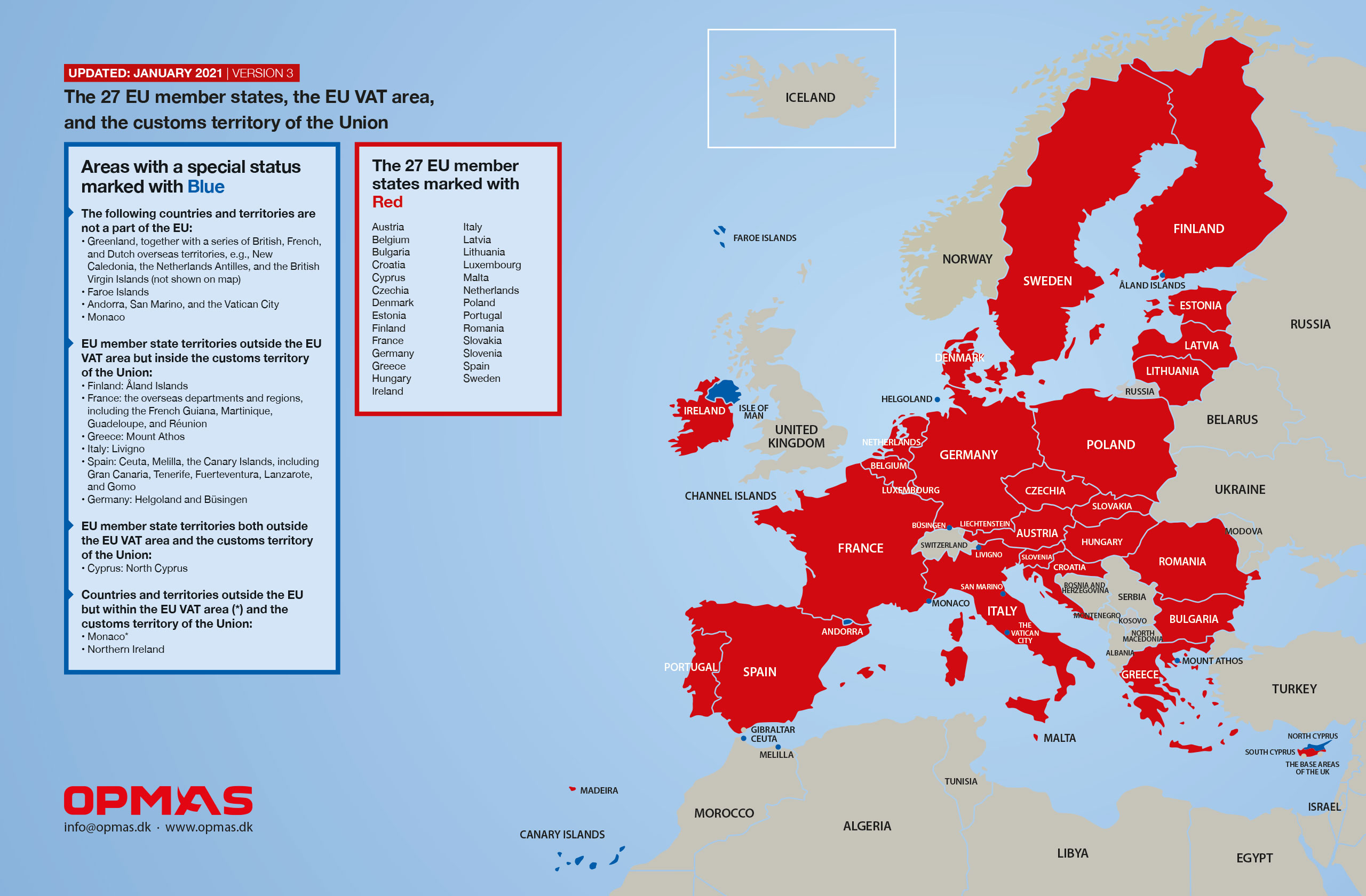
These examples are allowed under TA:
- Repair and/or maintenance of the aircraft by replacing the batteries, brakes, oil, wipers, or tires
- Service, guarantee, or courtesy work such as maintenance of the air conditioning system
- Repair and/or maintenance of the aircraft by replacing the turbines
These examples will not work under TA:
- Installation of a Wi-Fi system that was not installed beforehand
- Completely repainting
5) Aerial photos or firefighting TA cannot be used if the purpose of the entry is aerial photos or firefighting, as the purpose of TA is only the transportation of either goods or people.
IMPORTANT! How to become ready to use the Temporary Admission procedure? Check that the basic preconditions are fulfilled Understand the limitations and subjects that must be handled correctly Have the relevant paperwork ready onboard the aircraft to document the correct use of TA Instruct the pilots so that they are ready to handle a customs ramp check
The secure approach when using Temporary Admission Our Secure Temporary Admission procedure is the best tool to securely and quickly prove compliance with the TA procedure if the aircraft is stopped and checked on the ramp in an EU airport, eliminating any unnecessary waiting time or costs while EU customs are perusing the TA compliance at the ramp.
How can we help? If you have any questions about the above, please do not hesitate to contact us. We offer a cost-free introduction and analysis of the owner, user, and operator scenario to find the best option for you when flying within the EU. Please, feel free to contact us at any time.
Follow OPMAS on LinkedIn
Get a continuously stream of news and hints about EU importation and admission issues.
Remember to click Follow on LinkedIn

News archive
NOVEMBER 2022
LAST CALL: Grandfather your pre-Brexit UK C88 form to a EU27 importation form
AUGUST 2022
AUGUST 2021
Important update: Lessee’s right to deduct import VAT
DECEMBER 2020
WARNING: New development about a lessee’s right to deduct and defer VAT
BREAKING NEWS: Important amendment to the EU Union Customs Code
OCTOBER 2019
ALERT: interesting and positive news about the EU airline exemption with 0% VAT
OCTOBER 2017
BREAKING NEWS: Significant change for EU aircraft importations and the EU customs duty
Subscribe to our newsletter
Join our mailing list and receive the latest news and updates from the OPMAS team.
If the confirmation email is not received immediately. Please check your SPAM filter.
You have Successfully Subscribed!
18 MONTHS TEMPORARY ADMISSION RELIEF IN THE EU

Contact form

- Customs & Tax (62)
- Yacht audit & litigation prevention (11)
- Other yachting regulations (12)
Inquire about our services
Download our magic custom book.
As you may know, some non-EU flag yachts can benefit from the temporary admission relief (TAR) in the EU waters up to 18 months in a row if they are owned by a non-EU company and used by an ultimate beneficial owner resident outside the European Union.
It is possible (albeit optional) to officialize the TAR status through a verbal declaration document (71-01). This document can be very useful as it states the starting point of the 18 month time-delay. Additionally, some EU countries have a very narrow interpretation of the Union customs code and still believe that the TAR must mandatorily be sanctioned by a verbal declaration document.
YMCA helps you find the most suitable port in the Med where this verbal declaration can be done.
Please DM us or : T: +33 (0) 492 004 390 @ : [email protected] www.ymca-yachting.com

By SuperyachtNews 04 May 2022
An update on sailing in the Med under temporary admission
Guest author miguel angel serra provides an update on the temporary admissions customs regime….

By: Miguel Ángel Serra, Partner at Albors Galiano Portales and tax & legal advisor of the Spanish Yachting Association (ANEN)
Temporary Admission (TA) is a customs regime that allows yachts meeting certain conditions to sail in Spain and elsewhere within the Union Customs Territory (UCT), for a maximum period of 18 consecutive months[1], enjoying total relief from import duties and a VAT exemption on imports[2].
According to the Union’s Customs regulations, a yacht is eligible for TA provided that the three following conditions are met:
· The yacht is registered outside the UCT.
· The yacht is registered in the name of an owner established outside the UCT.
· The yacht is used by a person established outside the UCT.
These conditions have remained unchanged with the “new” Union Customs Code (UCC) that came into force on January 1, 2016, and its implementing regulations. Nevertheless, some aspects of TA changed compared with the previous Community Customs Code (CCC), amongst others:
a) The procedure by which it is understood that a yacht is under the TA regime
With the CCC, a yacht was considered to have been declared for TA by the sole act of crossing the 12 nautical miles limit of the UCT. This was based on the reference of TA to “the agreements in force in respect of tourist traffic”, which does not require customs formalities. Such reference was removed in the UCC and caused a little chaos, with some countries requiring the lodging of customs formalities (Annex 71-01, also called ‘oral declaration’) and others not.
In May 2016 I had the opportunity to discuss this with the Directorate-General for Taxation and Customs Union (DG TAXUD) in Brussels. It was not the intention of the European Commission to change the procedure and fortunately the current interpretation of most of the countries today -among others Spain-is, once again, that the mere act of crossing the 12 miles limit is once again accepted, and therefore is considered a customs declaration for the purpose of a yacht being admitted under TA.
b) Commercial use of yachts under TA
Regulations[3] implementing the previous CCC before May 1, 2016 only allowed commercial use of yachts for transport commencing or terminating outside the UCT. Said restriction disappeared in the new UCC, therefore implicitly allowing commercial use within the UCT. To this purpose I met the Spanish Customs Directorate General in representation of ANEN[4] and on October 10, 2018, a note was issued stating that yachts under TA could be used for commercial operations (charter) within the UCT.
The joy was short-lived however, since a binding ruling issued by the Spanish General Directorate of Taxes (DGT) determined that, based on Spanish internal regulations, charter under TA was not acceptable. But this could change shortly in certain specific circumstances that you would let you know in due course.
c) Impossibility to put the yacht in bond to stop the maximum 18-month period
Under the previous regulations it was possible to seal the yacht while not being used within the UCT, thereby avoiding the need to leave UCT waters before the maximum 18 months period was up since the seal stopped the computation of that period, resuming at the time of unsealing. Since May 1, 2016 “stopping the clock” is not possible anymore, being necessary to leave UCT waters to avoid payment of VAT on the hull.
b) Maximum total period of 10 years under TA
This is the most uncertain change of the new UCC and, no doubt, the most important, dangerous, and limiting element.
The new UCC introduced a restriction limiting to 10 years the maximum period a yacht may remain in the UCT under TA. This means that, by adding all the previous 18-month (maximum) periods of stay under TA, the yacht cannot remain in the UCT for more than 10 years. Exceeding such a period implies that VAT on imports would become payable on the value of the yacht at that time.
The rule has been applicable since May 1, 2016 and ten years may seem a long period, but we are already in 2022 and there are many yachts taking advantage of the maximum 18 month periods allowed, then sailing to a third country and re-entering the UCT again just some days later, so that they may have remained almost 6 years in the UCT.
When considering the acquisition of a yacht to mainly sail in the Med, it would be advisable to be aware of how long the yacht has already remained within the UCT, as the maximum 10 years period does not refer to the ownership but to the yacht itself.
We’ll see how the various different EU countries face this matter from May 1, 2026 (10 years after the UCC has come into force). Although the interpretation of the provision seems clear enough, Europe is a ‘box of surprises’ in interpreting EU regulations, which is hard to understand[1].
Obviously, once said 10-year maximum period has been reached, an option is to import the yacht definitively in the UCT, paying the relevant VAT (the rate depending on the country of importation). In this case, a good survey valuation would be advisable (the yacht’s value will presumably be lower than when acquired) and, it is also recommendable, should owners be thinking of a refit, to logically postpone it until after importation just to avoid increasing its value.
[1]Before the 18 month period is completed, the vessel must either pay EU Import VAT or leave EU waters calling at a third country port and obtaining proper evidence.
[2]The VAT exemption in relation to yachts under TA is not foreseen in the Union Customs Code (UCC) but in the VAT Directive which, moreover, refers to the conditions of such regime as foreseen in the UCC.
[3]Article 558 of Commission Regulation (EEC) No 2454/93 of 2 July 1993 laying out provisions for the implementation of Council Regulation (EEC) No 2913/92 establishing the Community Customs Code (CCC).
[4]Spanish Yachting Association, of which I am tax and legal advisor since 2013.
[5]The Union Customs Code is an EU Regulation (not an EU Directive) and, as such, is addressed to the citizens of the Union (not to the EU countries), therefore, it should be directly applied with a uniform criterion in all countries forming the Union, which leaves very little room for interpretation.
Join the discussion
To post comments please Sign in or Register
When commenting please follow our house rules
Click here to become part of The Superyacht Group community, and join us in our mission to make this industry accessible to all, and prosperous for the long-term. We are offering access to the superyacht industry’s most comprehensive and longstanding archive of business-critical information, as well as a comprehensive, real-time superyacht fleet database, for just £10 per month, because we are One Industry with One Mission. Sign up here .
Related news
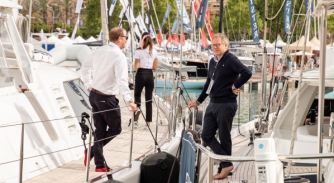
Mallorca musings
This author reflects on an incredibly successful Palma Boat Show and the future of yachting in the Balearics…
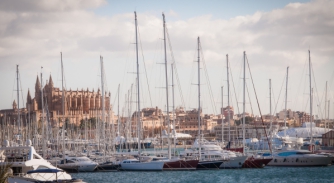
Palma International Boat Show opens with record numbers
PIBS opens its doors at Moll Vell with a record number of participating companies
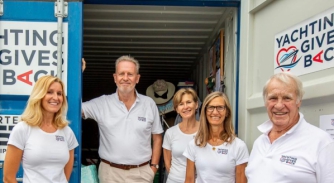
Yachting continues to give back
Nick Entwisle, Founder of Yachting Gives Back, discovers benevolence and altruism in times of uncertainty
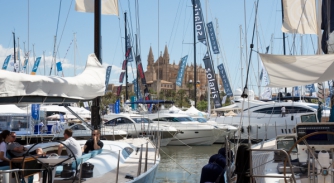
Introducing the Palma Superyacht Village
Palma Superyacht Village will form an integral part of the rebranded Palma International Boat Show
The Balearic Superyacht Forum
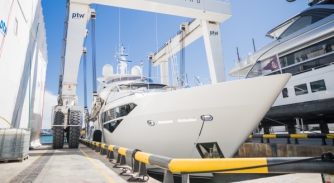
ptw Shipyard announces takeover
Xavier Mercado, CEO and founder of ptw Shipyard, outlines the position the shipyard hopes to take in the Spanish refit network
2 years ago
Sign up to the SuperyachtNews Bulletin
Receive unrivalled market intelligence, weekly headlines and the most relevant and insightful journalism directly to your inbox.
Sign up to the SuperyachtNews Bulletin
The superyachtnews app.

Follow us on
Media Pack Request
Please select exactly what you would like to receive from us by ticking the boxes below:
SuperyachtNews.com
Register to comment

Temporary Admission (Temporary Importation) for Yachts in Europe
Introduction.
It is the purpose of this guide to provide further information regarding the use of Temporary Admission relief from VAT for yachts visiting EU waters.
Temporary Admission (often referred to as Temporary Importation) can very simply be described as a mechanism that enables non European Union (EU) resident yacht owners to bring their yachts into Europe for a limited time, such as a holiday, and under certain conditions without having to pay VAT on the value of their yachts.
It is important that such a mechanism exists otherwise many non EU resident yacht owners would simply avoid visiting European waters as the costs of paying VAT on arrival would be prohibitive.
Temporary Admission – Criteria
The fundamental criteria for a yacht to qualify for Temporary Admission is that the yacht must be owned by a natural person (i.e. an individual) or a legal person (i.e. a company) who is established (i.e. resident) outside the VAT territory of the EU.
Temporary Admission – Time Allowed
The yacht can only be used within the EU for a maximum of eighteen months after its first arrival. Under certain conditions this time frame can be extended to a maximum of 24 months if vessel is laid up and usually bonded with the prior agreement of the authorities.
Temporary Admission – Restrictions
In practice it is not simply enough for a yacht to be owned by a natural or legal person established outside of the EU. The authorities will always look through the non-EU ownership of a particular vessel showing on its registration and look closely at how a particular vessel is being used.
This means that they would expect the principal user of the vessel, i.e. the individual or individuals who are the main users of the yacht, to themselves be established outside the VAT territory of the EU.
Principal users of yachts sailing within the EU under Temporary Admission should therefore be prepared to provide evidence to the authorities that they are genuinely not established in, or a resident in, the EU.
Temporary Admission – Arrival in the EU
The official EU guide to Temporary Admission states the following:
“Just crossing the frontier of the customs territory of the Community is in general sufficient. But, you may be required to use a route specified by customs and they may require you to make an oral or written customs declaration. It is possible they may require the provision of some kind of security or guarantee to cover the payment of the customs duties and VAT that become due if the boat does not leave the EU.”
The key point of this message is that procedures vary from country to country and it is therefore important that a yacht owner wishing to enter the EU under Temporary Admission carefully selects their EU entry point and understands in advance what formalities are required upon arrival.
Temporary Admission – Leaving the EU
Care should be taken when terminating Temporary Admission upon departure from the EU to a non-EU port. It is important that the yacht owner understands the relevant formalities required by the authorities of the state of departure and they should also check back in case the authorities of the EU country of arrival or any countries visited in between require any proof of departure from the EU.
The official EU guide to Temporary Admission states that the following with regard to the time that a yacht has to remain outside the EU before it can return:
“Yes, you are not limited to a single period of temporary import. You can sail the yacht out of the EU and when you came back again for another holiday a new period of temporary importation can begin. The customs rules do not provide for a ‘minimum period’ during which the goods must remain outside of the customs territory of the EU.”
Temporary Admission – Charter
In theory Temporary Admission is afforded only to yacht that are operated for private pleasure use.
Certain EU member states have in recent times allowed yachts operating under Temporary Admission relief to charter but usually with the restriction that the charter guests must be non EU residents and under the proviso that the owner and vessel complies with all relevant legal and fiscal requirements.
Temporary Admission – Sale of Vessel
The sale of a yacht whilst lying within the EU under Temporary Admission would breach the conditions of the relief.
Temporary Admission – Boat Shows
If a yacht is temporarily imported other than for cruising purposes, the specific Temporary Admission relief for a means of transport will not be applicable. For example, if a yacht is temporarily imported for a boat show, the Temporary Admission relief for exhibitions would be applicable.
Temporary Admission – Refit & Repair
If the importation of a yacht is for the purposes of major overhaul, refitting or refurbishment, it will not be eligible for Temporary Admission. In this case Inward Processing Relief (IPR) would be applicable.
Oceanskies – Non EU Yacht Registration
Oceanskies is a marine and aviation consultancy based in the Channel Island of Guernsey and since our launch in 2013 we have grown rapidly to become one of the largest yacht registration and documentation consultancies in Europe.
As a caveat we would stress that we are a yacht registration and documentation agency and not legal and/or tax advisers so none of the foregoing information should be treated as any kind of formal legal or tax advice. Readers are therefore advised to take appropriate professional advice specific to their individual circumstances before taking any action based on the contents of this or any other page of this website or any correspondence with ourselves.
As the rules for the Temporary Admission of yachts varies considerably between EU member states we would always suggest taking local advice before cruising in any particular country.
Yacht Registration
Yacht registries, yacht operation, yacht survey & certification, yacht agents, more information, oceanskies on instagram, oceanskies on twitter, guernsey office.
Oceanskies Limited Castle Emplacement St. Peter Port, Guernsey GY1 1AU Channel Islands, Great Britain
Oceanskies Support Services Limited International House Solent International Business Park George Curl Way Southampton SO18 2RZ Great Britain
Malta Office
Oceanskies (Malta) Limited Premiere Business Centre, Suite 1, Level 2 Constitution Street Mosta MST 1750 Malta
Email Crew: [email protected]
Email Registration: [email protected]
Call: +44 1481 711994
Oceanskies Limited is registered in Guernsey (company number 56102) | Registered Office: Castle Emplacement, St.Peter Port, Guernsey GY1 1AU, Channel Islands, Great Britain
Oceanskies Support Services Limited is registered in the United Kingdom (company number 14539527) | Registered Office: 80 Grove Lane, Holt, Norfolk, United Kingdom, NR25 6ED
Oceanskies Malta Limited is registered in Malta (company number C 77899) | Registered Office: Premiere Business Centre Suite 1, Level 2, Constitution Street, MOSTA, MST 1750, Malta
Terms & Conditions | Privacy Policy
- Superyachts
- Accessories
- Lawyer on Board
- Revenue on Board
- Boat Gourmet
- Vulkan auscultates and supports
- SHOP ONLINE

Yacht outside the EU, this is how temporary admission works
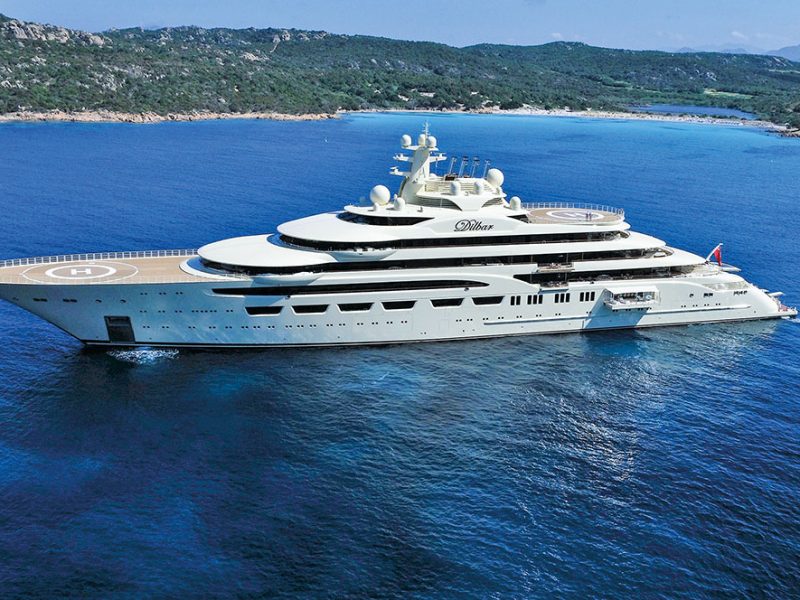
The Central Legislative Department of the Customs Agency has provided someimportant clarifications on the temporary admission of yachts from outside the EU
by Federico Santini*
WITH A RECENT MEASURE ON THE SITUATION REGARDING the temporary admission of yachts flying flags of countries outside the EU, the Central Legislative Department of the Italian Customs Agency, following a request made by UCINA Confindustria Nautica, has provided some important clarifications about the procedure for “oral customs declarations for temporary admission” covered by article 212 of EU Delegated Regulation 2446/2015, which lays out some provisions of the EU Customs Code (EU Regulation 952/2013).
It is first worth saying that, based on these EU rules, yachts flagged in a country outside the European Union are free to sail in the territorial waters of the Union in a “temporary admission” regime, with full exemption of customs importduties, provided that the following conditions are met: 1) the yacht is flagged outside the EU customs area; 2) the flag registration is in the name of an individual residing, or corporate entity established, outside the European Union; 3) the yacht is used by persons residing outside the EU customs area. The temporary admission regime is limited to a period of stay in EU territorial waters of 18 months (“Period for Discharge”) within which the yacht has to be transferred out of the territorial waters, andcan then re-enter so that a new period for discharge can start.
It is important to stress that should the period for discharge expire without the yacht being transferred out of European waters, the owner will be criminally liable for smuggling , unless theowner has definitively imported the yacht and paid VAT and import duties, or has applied a different customs regime.
But how should an owner certify the starting date of the period for discharge? In relation to this, article 136 of the delegated regulation mentioned above provides for the filing by the owner of a declaration , which can even be oral, with the Customs Office of the first port of entry in EU territory. However, the Italian Customs Agency did not issue any ruling on operating procedures to adhere to this measure.
This gap has been filled by the recent notice from the Central Legislative Department of the Italian Customs Agency, which clarifies that the filing by the owner of the “oral customs declaration” referred to in article 136 of the delegated regulation is to be considered an option rather than an obligation, since the mere act of entering EU territorial waters means that the “temporary admission” regime is automatically applied.
The same measure further clarifies that, should the owner choose to file an oral declaration in order to get a formal confirmation from the Customs Agency of the exact date of entering EU territory – and therefore the starting date of the period for discharge – then schedule 71-01RD can be used, without any requirement for additional securities, by providing evidence that the conditions mentioned above have been met so as to benefit from the temporary admission regime and as proof that the yacht comes from outside the EU.
The form for schedule 71-01 RD is composed of a first part to be filled out by the owner indicating the owner’s details, the details of the yacht to be admitted to the temporary admission regime (name, model, length, flag and official registration number, IMO number), the fact that it is to be used for pleasure and details of the 18-month period for discharge and expiry date. The second part of the form is to be filled out by the Customs Office.
It is worth mentioning that the new EU Customs Code has significantly limited cases in which the period for discharge can be interrupted, and in particular has cancelled previous provisions which allowed this period to be extended while the vessel remained in EU territory but was kept in storage. However the owner may still apply for a postponement of the period for discharge if the vessel undergoes maintenance and refitting work.
* Federico Santini : he is managing partner of the Santini & Partners Law Office in Rome. He is specialized in international law and maritime law, has consolidated experience in the yachting field especially in terms of super yachts transactions, the registration of yachts, international arbitration, insurance issues and tax related . He is a member of the Italian Association of Maritime Law and advisor for the most important law offices and of the international associations. For information or clarifications: [email protected] t
(Yacht outside the EU, this is how temporary admission works – Barchemagazine.com – July 2019)
I agree to the terms and conditions of the privacy policy (EU Regulation 2016/679)*

Temporary Admission of Yachts
EU VAT legislation allows for the procedure for the temporary admission of yachts. Such a procedure makes it possible for any non-EU privately owned/registered yacht flying a non-EU flag to operate in the territorial waters of the European Union for a period of not more than 18 months from the date of entering the EU territorial waters, which is known as ‘the period of discharge’. After this period lapses, the yacht is to leave the EU territorial waters to avoid permanent admission. The temporary admission procedure may be initiated in any EU member state, including Malta.
Home › Yachting › Temporary Admission of Yachts
When a yacht is temporary admitted into the EU via Malta, the customs authorities will require the deposit of a bank guarantee or security covering a percentage of the payment of the VAT and customs duties which become payable if the yacht remains in the EU territorial waters after the period of discharge.
This procedure was previously referred to as ‘temporary importation’ which was an ambiguous title since a yacht under such a procedure is never actually imported under an EU importation declaration, but merely given a right of free passage throughout the EU, provided it is in compliance with the statutory requirements. For temporary admission to take place, the user of the yacht must be a non-EU resident, although EU resident guests can also accompany the non-EU resident. Moreover, the yacht must be used for a private purpose with the intention for re-exportation.
This temporary admission mechanism allows non-EU residents wishing to temporarily make use of their private yachts within EU waters to admit their yacht under temporary admission via Malta, being subjected to the Maltese customs authorities. This procedure would enable yacht owners to use their yacht freely in EU territorial waters, without payment of Value Added Tax (VAT), being able to freely move between Member States without any further custom duties or formalities, for the aforementioned period of 18 months. This is an important mechanism which makes it possible for non-EU resident yacht owners to enter EU territorial waters for a definite period, such as a holiday, without being required to pay VAT duties. In the absence of such a mechanism, non-EU resident yacht owners would be hesitant to visit European waters due to the cumbersome VAT duties to be paid.
Onward Supply Relief for Commercial Purpose
If a yacht is temporary admitted in the EU for a commercial purpose, the temporary admission mechanism will not be applicable, and the yacht will be subjected to the relative VAT and custom procedures. A mechanism which is relevant in this scenario is the ‘Onward Supply Relief’. The onward supply relief mechanism is an exemption from VAT on the importation of good imported into Malta from non-EU member state by a taxable person registered for VAT, where such imported goods are released into free circulation in Malta, and then dispatched to a taxable person into another EU country as an intra-community supply. Such a mechanism is regulated under item 3 of Part Four of the Fifth Schedule of the VAT Act of 1998. These provisions are also applicable to the temporary admission of yachts in the EU, acting as a tool against the import VAT payment, whilst allowing the yacht to circulate freely the EU territorial waters.
Boat Exhibitions
The temporary admission mechanism does not apply to yachts intended for boat exhibitions. Thus, if a yacht is temporary admitted in the EU territorial waters for the purpose of a boat exhibition, the applicable regime would be the ‘temporary admission relief for exhibitions’, which is to be filed before the boat exhibition commences.
Sale of Vessels
With regard to the sale of vessels, the temporary admission procedure is not applicable. Moreover, local customs can impose a security guarantee or deposit covering the VAT and customs duties that will be due if a particular yacht is sold or not removed within the prescribed period of time.
Refit and Repair
If a yacht is temporary admitted within the EU territorial waters to undergo major overhaul, refitting or refurbishment, the temporary admission procedure is not applicable. Instead, the applicable mechanism would be the ‘Inward Processing Relief’. Through this mechanism, import VAT, customs duties and the excise duty on third country yachts imported within the EU territorial waters are suspended, provided that the imported yacht is intended for re-exportation after its processing and that the applicable requirements are satisfied. However, such a mechanism should not be confused with the temporary admission procedure as there are different requirements.
Recent Insights
The removal of rmrs from transport malta’s list of authorised classification societies, eshipfinance – alternative finance for shipowners, the determining factor in establishing the applicable jurisdiction for seafarers, covid-19 vaccinations and seafarers: an overview, changes to the existing tonnage regulations, the merchant shipping directorate’s new pleasure yacht changeover guidelines, meet gvzh advocates’ at the 2021 monaco yacht show, palma international boat show, key contacts, michael grech, get in touch with us.
Subject * General Enquiry Vacancy Enquiry Sales Enquiry Aftersales Enquiry
Full Name *
Company name, email address *, phone number *.
Please leave this field empty. I consent to GVZH storing my personal data provided for the sole purpose of responding to my enquiry and administering my request.
Send Message Sending..
How can we help?
View all Services
Send us an email

IMAGES
VIDEO
COMMENTS
The time limit for temporary admission for yachts expires in 18 months. This is the maximum time allowed for the yacht to sail in Italy or, more generally, in European waters. Regulation EC n. 2454/1993 (clause 558) * allows boats registered outside of EU territory to sail in European waters without having to pay any VAT or duties.
The boats concerned have to be placed under the 'temporary admission procedure' (TA) with Customs and the period of use in the EU is limited in time. When the time is up the boat has to leave, ... Yes, you are not limited to a single period of temporary import. You can sail the yacht out of the EU and when you came back again a new period of ...
Introduction. It is the purpose of this guide to provide further information regarding the use of Temporary Admission relief from VAT for yachts visiting EU waters. Temporary Admission (often referred to as Temporary Importation) can very simply be described as a mechanism that enables non European Union (EU) resident yacht owners to bring ...
Temporary Admission is a Customs tax relief regime that enables non-EU resident owners of private yachts the ability to bring their yachts into Europe for a limited time without having to pay VAT on the value of the yacht. It is undeniably an important mechanism, without which many non-EU resident yacht owners would likely avoid visiting ...
There is an official Temporary Admission inventory/document to be completed when the yacht first enters the EU at the start of the 18 month period although we do not see many cases where customs have asked for the form to actually be completed. If the yacht is laid up, it is possible to extend this for a further period of 6 months up to a total ...
There is an official Temporary Admission inventory/document to be completed when the yacht first enters the EU at the start of the 18-month period although we do not see many cases where customs have asked for the form to actually be completed. If the yacht is laid up, it is possible to extend this for a further period of six months up to a ...
Yacht temporary clearance procedure. Non-EU tax resident yacht owners wishing to sail their yacht in EU waters for private purposes can temporarily bring their yacht into the EU free of duty or VAT. In this situation, the yacht should use the „Temporary Admission Procedure" (TI) with the possibility to sail in EU waters for up to 18 months.
Temporary Admission is a Customs tax relief regime that enables non-EU resident owners of private yachts, the ability to bring their yachts into Europe for a limited time without having to pay VAT on the value of the yacht. It is undeniably an important mechanism, without which many non EU resident yacht owners would likely avoid visiting ...
Temporary admission for luxury yacht outside the EU: our Law Firm Arnone&Sicomo Law Firm has a maritime law and admiralty law department. Our maritime lawyers assist Italian and foreign customers in the purchase procedures of luxury yachts in Italy or abroad, as well as of any other type of vessel.
Temporary admission is a key principle of EU, UK and other customs regimes. This is why temporary admissions procedures are available in the EU and UK. They provide complete import duty relief on any foreign yacht or aircraft that: Is only being used temporarily and/or for a limited period in the customs area.
Temporary admission 'Temporary admission' allows goods to be brought in temporarily to the Union with total or partial relief from import duty. Examples of where this procedure might be used would be in the case of goods imported for purposes such as exhibiting at a trade fair or taking part in a music show. In some cases the completion of ...
For a yacht to be in free circulation within the EU it has to have been supplied in the EU, imported into the EU or grandfathered in by way of VAT exemption on age. If your yacht was supplied in the EU as a domestic supply with VAT applied then the chances are that yacht is in free circulation and no importation is required. If a yacht is operated privately under temporary admission it does ...
Private Use: The client's intent to use the yacht solely for private purposes aligns with the Temporary Admission Regime's eligibility criteria. Temporary Admission is a Customs tax relief regime that enables non-EU resident owners of private yachts the ability to bring their yachts into Europe for a limited time without having to pay VAT on the value of the yacht.
Temporary Admission is a common mechanism where non-EU resident yacht owners can sail around the EU without paying VAT, as long as they obide by the strict g...
Brexit has now opened up Temporary Admission opportunities for UK residents. Any non-EU privately registered/owned yacht (now including UK from 1 January 2021) can operate in the EU for a period not exceeding 18 months at which point the yacht reaches the period of discharge and must be removed from the EU. Any user of the yacht must be a non ...
The EU Commission has once again updated one of its main guidance documents this summer, which describes several important points about the use of Temporary Admission (TA). These guidance documents typically list issues that have needed extra guidance or exposure to ensure no misunderstandings. We have compiled a list of important points ...
As you may know, some non-EU flag yachts can benefit from the temporary admission relief (TAR) in the EU waters up to 18 months in a row if they are owned by a non-EU company and used by an ultimate beneficial owner resident outside the European Union. It is possible (albeit optional) to officialize the TAR status through a verbal declaration ...
Temporary Admission is a Customs tax relief regime that enables non-EU resident owners of private yachts the ability to bring their yachts into Europe for a limited time without having to pay VAT ...
Temporary Admission (TA) is a customs regime that allows yachts meeting certain conditions to sail in Spain and elsewhere within the Union Customs Territory (UCT), for a maximum period of 18 consecutive months [1], enjoying total relief from import duties and a VAT exemption on imports [2]. According to the Union's Customs regulations, a ...
EU Yacht Temporary Admission - Restrictions In practice it is not simply enough for a yacht to be owned by a natural or legal person established outside of the EU. The authorities will always look through the non-EU ownership of a particular vessel showing on its registration and look closely at how a particular vessel is being used.
Introduction. It is the purpose of this guide to provide further information regarding the use of Temporary Admission relief from VAT for yachts visiting EU waters. Temporary Admission (often referred to as Temporary Importation) can very simply be described as a mechanism that enables non European Union (EU) resident yacht owners to bring ...
1) the yacht is flagged outside the EU customs area; 2) the flag registration is in the name of an individual residing, or corporate entity established, outside the European Union; 3) the yacht is used by persons residing outside the EU customs area. The temporary admission regime is limited to a period of stay in EU territorial waters of 18 ...
EU VAT legislation allows for the procedure for the temporary admission of yachts. Such a procedure makes it possible for any non-EU privately owned/registered yacht flying a non-EU flag to operate in the territorial waters of the European Union for a period of not more than 18 months from the date of entering the EU territorial waters, which is known as 'the period of discharge'.